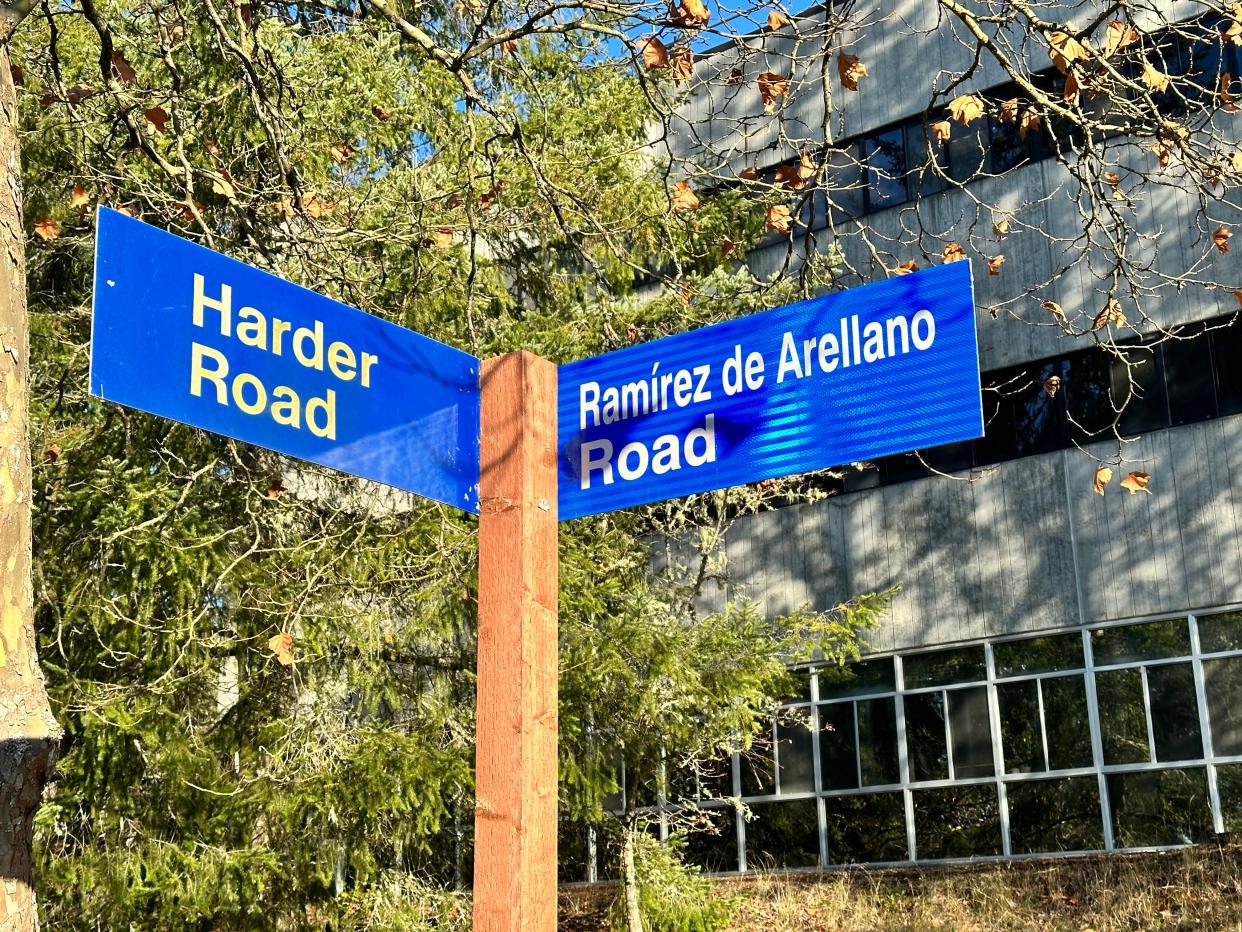Navy renames 2 streets on Bangor submarine base to remove names tied to the Confederacy

BANGOR — Hunley Road and Lee Street are no more, but Ramirez de Arellano Road and Joyner Drive are now on the map.
Two streets on the Navy's Bangor base that previously had names affiliated with the Civil War's Confederacy have been renamed, one after the Navy's first Hispanic submarine commanding officer and the other a former chief of the boat for the submarine USS Plunger, who was one of the first African Americans to serve in that position, according to Naval Base Kitsap.
The renaming of the two streets at Bangor is part of the nationwide effort to change the names of many military bases, posts, ships, streets and other assets of the Department of Defense that were named after the Confederate soldiers.
The effort dates back to 2020, when the police killing of George Floyd drove a nationwide movement to protest against systemic racism and pointed to Confederate monuments and recognitions, according to a statement from the Department of Defense.
In the National Defense Authorization Act of Fiscal 2021, Congress established a naming commission to assess, develop and recommend procedures for removing and renaming assets of the DoD that had names affiliated with the Confederacy. The commission issued a final report in 2022 to recommend new names for nine military bases, assets on the U.S. Military Academy at West Point New York, and the U.S. Naval Academy at Annapolis, Maryland, and all the remaining DoD assets that have Confederacy-affiliated names, according to the commission's final report.
The DoD began implementing the commission's recommendation in January this year and all the implementation has to be completed by the deadline on Jan. 1, 2024, according to DoD.
Who's Capt. Marion Frederic Ramirez de Arellano?
The previous Hunley Road was named after H. L. Hunley, a Confederate submarine built in 1863. It was the first sub to sink an enemy warship in wartime. The sub was privately built by Park and Lyons of Mobile, Alabama, with the financial backing of Horace Lawson Hunley, according to the Naval History and Heritage Command.
Saying farewell to that name, the street will now be named after Capt. Marion Frederic Ramirez de Arellano, a Puerto Rico-born World War II hero who participated in war patrols on three submarines during the war, according to Naval Base Kitsap.
Ramirez de Arellano graduated from the Submarine School in New London, Connecticut, in 1938 and after that joined the USS Pickerel (SS 177). The Pickerel was assigned to the Asiatic Fleet in 1939 and participated in submarine operations in the Pacific early in World War II. In 1942, he detached from the Pickerel, had brief duty at the Navy Yard in Mare Island, California, and returned to the Pacific to serve as executive officer and navigator of the submarine USS Skate, according to the Naval History and Heritage Command.
In 1944, Ramirez de Arellano assumed command of the USS Balao, which made him the U.S. Navy's first Hispanic submarine commanding officer, according to Naval Base Kitsap.
The captain also assumed command of USS Piper (SS 409), Submarine Base St. Thomas, USS Lindenwald (LSD 6) and USS Thomaston (LSD 28) in his 26 years of service. Ramirez de Arellano retired from the Navy in 1961 and passed away in 1980, according to the Naval History and Heritage Command.
Who's Kenneth R. Joyner Sr.?
The former Lee Street was named after the USS Robert E. Lee (SSBN-601), the third nuclear-powered ballistic missile submarine to join the fleet. The sub was commissioned in 1960, decommissioned in 1983 and was disposed of at the Puget Sound Naval Shipyard in 1991, according to the Naval History and Heritage Command.
Robert Edward Lee was a Confederate general during the American Civil War, leading the Army of Northern Virginia from 1862 until its surrender in 1865, according to an entry documented in Encyclopedia Virginia, a project run by Virginia Humanities and written by diplomat and historian Elizabeth Brown Pryor. The Confederate general was a well-regarded officer of the United States Army before the war, Pryor wrote in the entry. Lee was born in 1807 and died in 1870.
Now the renamed Joyner Drive now relates to Kenneth R. Joyner Sr., who was one of the first African Americans to serve as Chief of the Boat of the submarine USS Plunger, according to Naval Base Kitsap.
Joyner passed away in March 2022. According to an obituary published by Ballard Family Mortuary in Hawaii, Joyner was born in New York City, enlisted in the Navy in 1950 and was selected to attend nuclear power school by Admiral Hyman Rickover, the father of the nuclear Navy.
"This rare accomplishment for an African American helped to integrate the Navy; at the time, Black sailors typically served as stewards, cooks, drivers, and similar service roles," according to the obituary.
His service spanned the Korean War and the Vietnamese conflict, the obituary said.
Joyner earned numerous awards and accolades in his naval career, including the Navy Unit Commendation (two awards), Vietnam Service Medal, China Service Medal, Korean Service Medal and European Occupation Medal. The USS Plunger also received an award as the Navy’s top nuclear sub during his time as chief of the boat, according to the obituary.
"Upon his retirement in 1974, he was commended for nearly 24 years of distinguished service and transferred to the Fleet Reserve," according to the obituary.
This article originally appeared on Kitsap Sun: Naval Base Kitsap-Bangor renames streets to cut Confederate ties

